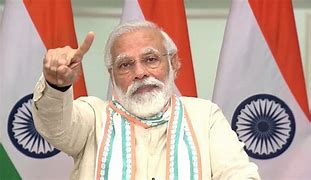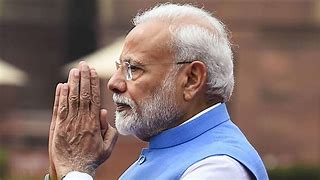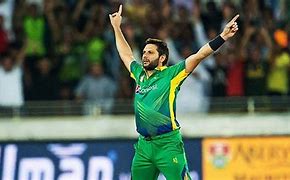Feature
Obama-Modi relationship helped seal Paris deal

Washington: A “strong and productive relationship” between President Barack Obama and Prime Minister Narendra Modi helped seal a historic deal at the Paris climate change conference, according to a senior US official.
US Special Envoy for Climate Change Todd Stern did not think that but for Obama’s call to Modi just a day before the deal, the agreement would not have come about. “I could not at all say that but for that call the agreement wouldn’t have come together,” Stern told foreign media Tuesday.
It was more like “a check-in call to see how we were doing and to urge us all on together toward a successful conclusion,” he said.
“And I think it was done in that spirit, not in the spirit that there was some specific thing that had to be done before the agreement could get completed.”
“What I can say is that President Obama and Prime Minister Modi have a very, I think, strong and productive relationship, not just on climate change but broadly.”
“It was a quite extraordinary fact that within the space of four months there were two head of state visits,” he said noting that Modi visited the US in September 2014 and then invited Obama to India just four months later in January.
And then there were communications during the year, Stern said. They also met on the margins of the UN General Assembly in New York and they met on the first day of the Paris meeting.
Stern who attended that meeting said, “It was, I think, a very warm and positive and cordial and detailed, substantive exchange.”
“In fact, they talked so long that .they were a little bit late to the announcement of this big Mission Innovation idea on R&D that the US, India, China, many other countries ultimately were part of,” he said.
The US “is strongly supportive of the notion of differentiation,” Stern said. “We think it’s absolutely right that you can’t expect developing countries to act in ways that are inconsistent with their own imperatives of development, growth, poverty eradication, and so forth.”
“We also think, though, that the nature of differentiation has to be forward-looking and has to be done in a way that is consistent with and sort of fundamentally grounded in countries’ circumstances and capacities,” he said.
It should not simply be based on “in what category they were in the original 1992 framework convention, and particularly for an agreement that we hope is going to last for many decades,” Stern said.
The core idea of mitigation structure is that a country is going to decide for itself what it’s able to do, he said.
In response to another question, Stern said, “there are common standards that apply to everybody, but you don’t expect the United States and or the EU to be doing the same thing as a least developed country or necessarily even India.”
“That’ll depend on their own assessment of what they can do, but with strong expectations that countries certainly, again, have common standards and carry those out to the greatest extent possible,” he said.
Entertainment
Meghalaya Reserves Legalized Gambling and Sports Betting for Tourists

The State Scores Extra High on Gaming-Friendly Industry Index
Meghalaya scored 92.85 out of 100 possible points in a Gaming Industry Index and proved to be India’s most gaming-friendly state following its recent profound legislation changes over the field allowing land-based and online gaming, including games of chance, under a licensing regime.
The index by the UK India Business Council (UKIBC) uses a scale of 0 to 100 to measure the level of legalisation on gambling and betting achieved by a state based on the scores over a set of seven different games – lottery, horse racing, betting on sports, poker, rummy, casino and fantasy sports
Starting from February last year, Meghalaya became the third state in India’s northeast to legalise gambling and betting after Sikkim and Nagaland. After consultations with the UKIBC, the state proceeded with the adoption of the Meghalaya Regulation of Gaming Act, 2021 and the nullification of the Meghalaya Prevention of Gambling Act, 1970. Subsequently in December, the Meghalaya Regulation of Gaming Rules, 2021 were notified and came into force.
All for the Tourists
The move to legalise and license various forms of offline and online betting and gambling in Meghalaya is aimed at boosting tourism and creating jobs, and altogether raising taxation revenues for the northeastern state. At the same time, the opportunities to bet and gamble legally will be reserved only for tourists and visitors.
“We came out with a Gaming Act and subsequently framed the Regulation of Gaming Rules, 2021. The government will accordingly issue licenses to operate games of skill and chance, both online and offline,” said James P. K. Sangma, Meghalaya State Law and Taxation Minister speaking in the capital city of Shillong. “But the legalized gambling and gaming will only be for tourists and not residents of Meghalaya,” he continued.
To be allowed to play, tourists and people visiting the state for work or business purposes will have to prove their non-resident status by presenting appropriate documents, in a process similar to a bank KYC (Know Your Customer) procedure.
Meghalaya Reaches Out to a Vast Market
With 140 millions of people in India estimated to bet regularly on sports, and a total of 370 million desi bettors around prominent sporting events, as per data from one of the latest reports by Esse N Videri, Meghalaya is set to reach out and take a piece of a vast market.
Estimates on the financial value of India’s sports betting market, combined across all types of offline channels and online sports and cricket predictions and betting platforms, speak about amounts between $130 and $150 billion (roughly between ₹9.7 and ₹11.5 lakh crore).
Andhra Pradesh, Telangana and Delhi are shown to deliver the highest number of bettors and Meghalaya can count on substantial tourists flow from their betting circles. The sports betting communities of Karnataka, Maharashtra, Uttar Pradesh and Haryana are also not to be underestimated.
Among the sports, cricket is most popular, registering 68 percent of the total bet count analyzed by Esse N Videri. Football takes second position with 11 percent of the bets, followed by betting on FIFA at 7 percent and on eCricket at 5 percent. The last position in the Top 5 of popular sports for betting in India is taken by tennis with 3 percent of the bet count.
Local Citizens will Still have Their Teer Betting
Meghalaya residents will still be permitted to participate in teer betting over arrow-shooting results. Teer is a traditional method of gambling, somewhat similar to a lottery draw, and held under the rules of the Meghalaya Regulation of the Game of Arrow Shooting and the Sale of Teer Tickets Act, 2018.
Teer includes bettors wagering on the number of arrows that reach the target which is placed about 50 meters away from a team of 20 archers positioned in a semicircle.
The archers shoot volleys of arrows at the target for ten minutes, and players place their bets choosing a number between 0 and 99 trying to guess the last two digits of the number of arrows that successfully pierce the target.
If, for example, the number of hits is 256, anyone who has bet on 56 wins an amount eight times bigger than their wager.























